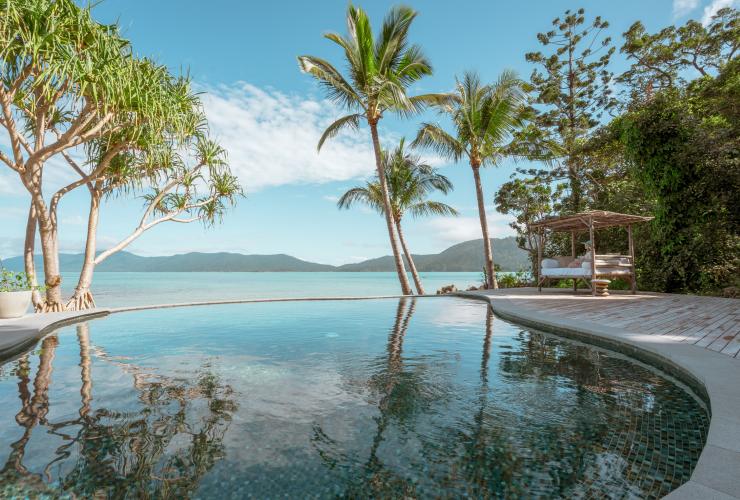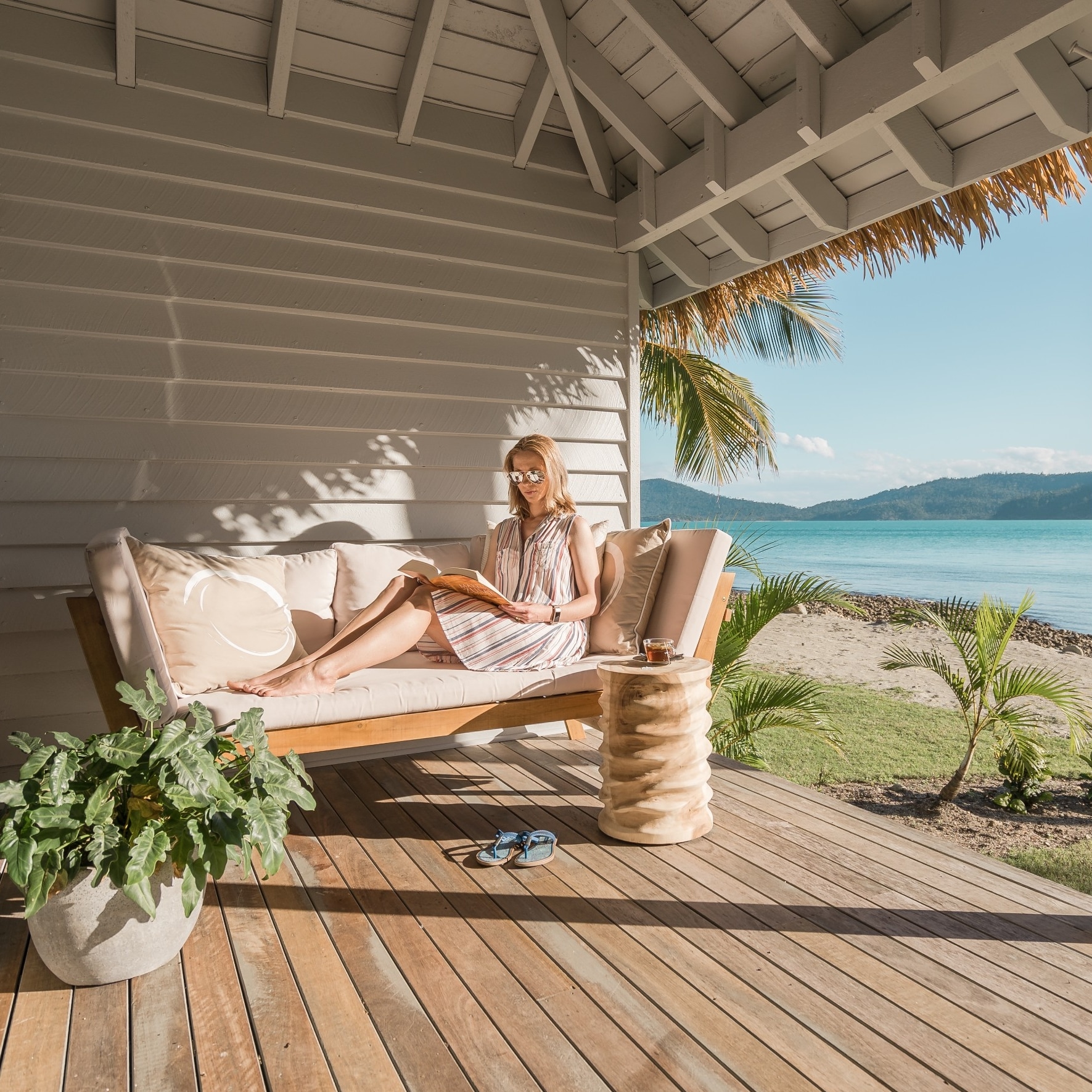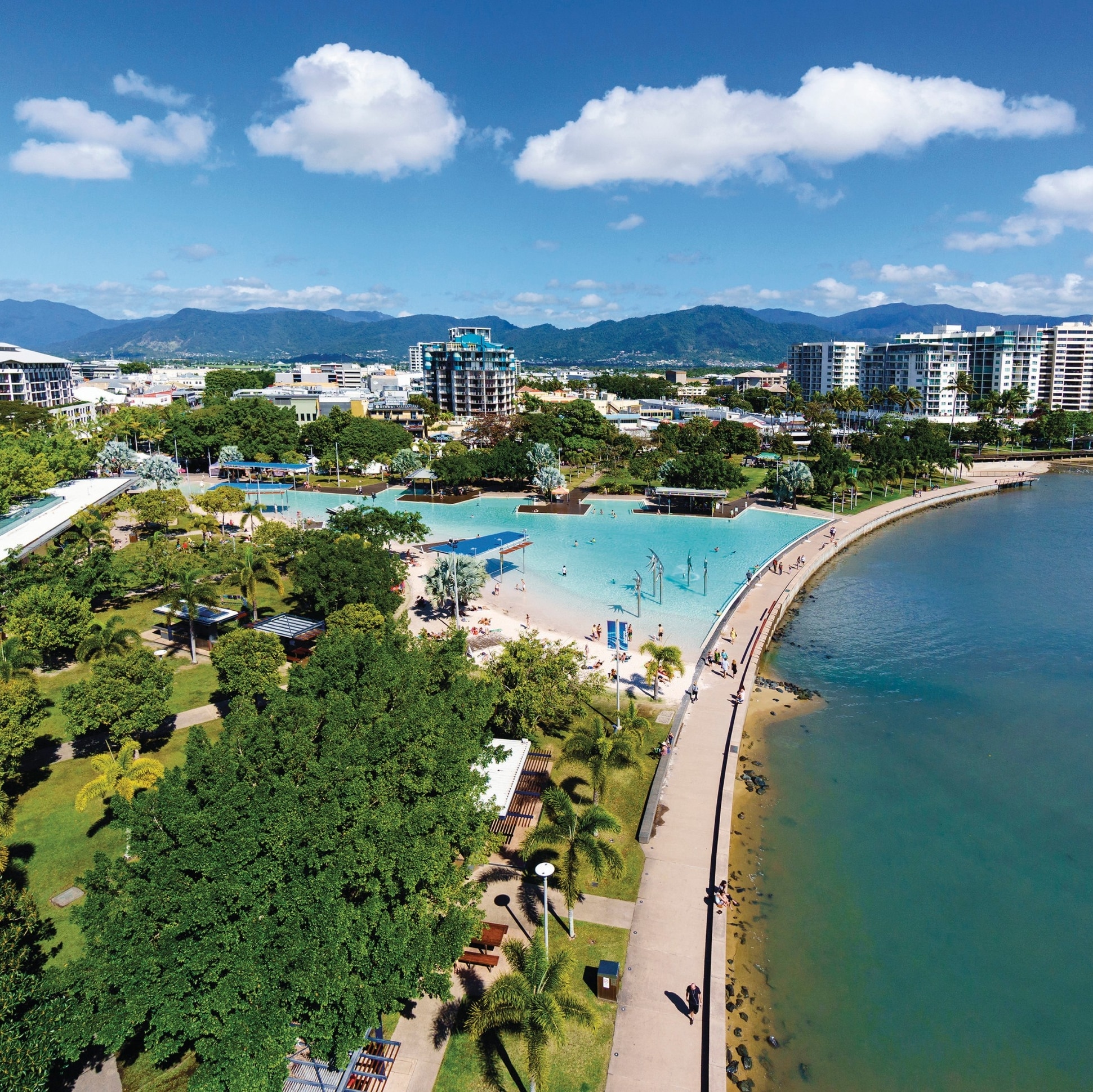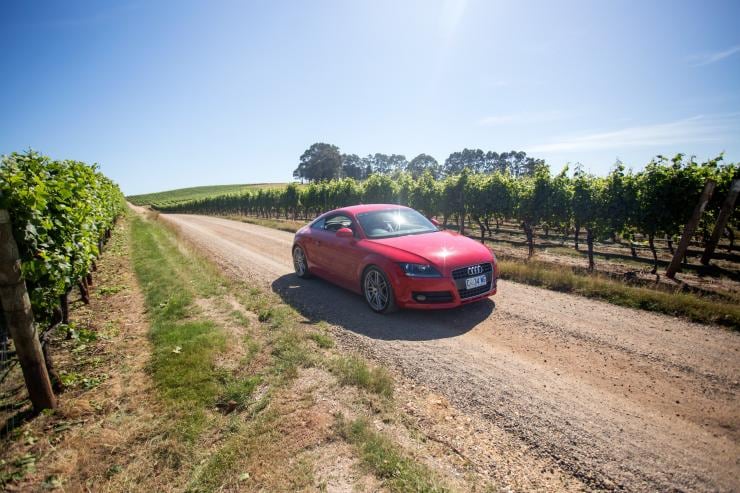Great Barrier Reef, Queensland
How to have a low-impact holiday on the Great Barrier Reef
Help protect the world’s largest coral reef system on your next visit with these six simple steps.
By Sarah Reid
Brimming with biodiversity and natural wonder, the UNESCO World Heritage-listed Great Barrier Reef is one of Australia’s most spectacular holiday playgrounds. But it’s important to be mindful of how your visit can affect this living masterpiece. By making conscious efforts to minimise your environmental footprint during your visit, you can help protect this dazzling marine ecosystem for the enjoyment of future generations. Follow this checklist on your next Great Barrier Reef holiday for the ultimate low-impact break.
1. Opt for eco-friendly accommodation

Elysian Retreat, Whitsunday Islands, Queensland © Elysian Retreat/Nathan White
The Great Barrier Reef region is home to some of Australia’s top eco-lodges. As well as being unforgettable stays, these lodges are committed to minimising their impact on the natural environment surrounding the reef and protecting the incredible marine life that calls this vast area home, offering you the chance to play a role in reef conservation simply by staying at one.
As famous for its manta ray population as it is for its sustainability initiatives, Lady Elliot Island, at the reef’s southern tip, was the first Great Barrier Reef resort to ban plastic water bottles. It is also working towards becoming 100 per cent powered by renewable energy, so a stay here not only feels good, it does good.
The luxurious Elysian Retreat, which opened in 2019 on Long Island in the Whitsundays, is the Great Barrier Reef’s first solar-powered resort.
And on the mainland, just a 15-minute drive south of Port Douglas (or a one-hour drive north of Cairns), Thala Beach Nature Reserve has been recognised for its commitment to regenerating the former cane plantation land that this eco-sensitive seaside lodge sits on. By opting to bed down here, you can help to support this conservation initiative while enjoying a truly spectacular stretch of coast.
2. Look after the reef

Lady Musgrave Island, Great Barrier Reef, Queensland © Tourism and Events Queensland
Read Next
7 great holiday ideas for the conscious traveller
Let the saying “take only pictures, leave only bubbles” be your motto while visiting the Great Barrier Reef which, despite being the world’s largest living organism, is also incredibly fragile. Do your bit to help prevent damage to the reef by avoiding contact with coral (hint: be mindful of your fins when snorkelling or diving), and not taking any souvenirs – yes, even seashells on the beach are a big no-no.
Think about what you put on before you get in the water too; some ingredients commonly found in sunscreens can damage coral, so pack a natural sunscreen for your next Great Barrier Reef holiday.
And whether you’re at home or on the reef, limiting your use of single-use plastics will help stop them finding their way to the ocean, where they can wreak havoc on seabirds and marine life.
3. Support reef-friendly businesses

Sailaway Reef & Island Tours, Port Douglas, Queensland © Tourism Australia

Sign up for reef school
Based in Cairns, Reef Teach hosts marine biologist talks that foster a greater understanding and appreciation of the Great Barrier Reef.
Supporting locally run businesses when you visit the Great Barrier Reef is great, but supporting ventures dedicated to safeguarding the natural environment can be even more impactful.
These can be eateries committed to serving ethical local produce (such as Julaymba Restaurant at Daintree Ecolodge), eco-certified and High Standard Operators that integrate education about preservation of the reef into the travel experience (such as Cairns-based Passions of Paradise sailing tours), or even Aboriginal and Torres Strait Islander-run activity operators who share traditional wisdom about treading gently on the environment, such as Dreamtime Dive & Snorkel in Cairns. Whatever tour you choose, look out for one of the reef's Master Reef Guides during your visit, who will be sure to provide up-to-date information and tips on making a difference.
Supporting green business recently became even easier in the Douglas Shire (which includes Port Douglas and the Daintree region, north of Cairns). In 2019 it became Ecotourism Australia’s first certified nature destination after meeting the strict selection criteria.
4. Enjoy low-impact activity options

Kuku Yalanji Cultural Habitat Tours, Cooya Beach, Queensland © Tourism and Events Queensland
Getting Around Tip
Exploring the Cairns & Great Barrier Reef coast by car? Consider hiring an electric vehicle, as there are free charging stations at major attractions such as the Cairns Esplanade and Mossman Gorge Visitor Centre.

Every visitor to the Great Barrier Reef contributes to its conservation via an environmental management charge (EMC) applied to reef tours. The EMC supports various reef recovery projects, so you can feel good about visiting the reef no matter how you get there. But by integrating a non-motorised marine activity or two into your itinerary, you can help keep your carbon emissions to a minimum, too.
Just north of Port Douglas, you can learn how to hunt mud crabs using traditional Aboriginal fishing techniques with Walkabout Cultural Adventures or Kuku Yalanji Cultural Habitat Tours. Staying in Airlie Beach on the Whitsunday Coast? Active travellers can opt to explore the Whitsunday Islands by kayak on a guided tour with Salty Dog Sea Kayaking.
5. Give back to the reef
Citizen science projects offer non-scientists an opportunity to contribute to the Great Barrier Reef’s long-term protection – you can even participate in some of them remotely. Among the more accessible citizen-science initiatives is the free Eye on the Reef app, which invites you to log information about reef health, marine animals, incidents and more after visiting the reef, perhaps on a snorkelling tour. This data is then used to inform sustainable reef management.
You can also opt to join the Citizens of the Great Barrier Reef by making an online pledge to take simple actions to save the reef (such as avoiding single-use plastics), and helping to inspire collective impact on a global scale.
6. Swim with endangered animals on the reef

Mon Repos, Bundaberg, Queensland © Jewels Lynch/Tourism Events Queensland
On the Southern Great Barrier Reef, Mon Repos Turtle Centre, near Bundaberg (a four-hour drive north of Brisbane), offers one of Australia’s top turtle-viewing experiences, as thousands of endangered loggerhead turtles nest on the beach from November to January, and hatchlings emerge from January to March. Snorkelling and diving day trips to stunning Lady Musgrave Island are available all year round (and whale-watching trips from July to October) with Lady Musgrave Experience, based in Bundaberg.
From Gladstone, a one-hour drive north of Bundaberg, you can visit Heron Island (also home to nesting turtles) and follow that up with a night or two of eco-friendly glamping on nearby Wilson Island.



































































































































